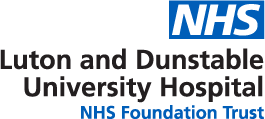By continuing to use the site, you agree to the use of cookies. You can find out more by following this link - Close
Most breast problems and symptoms are not cancerous or harmful. Nine out of ten people that we see in the breast clinic will not turn out to have a cancer. If you have any new breast symptoms, even if you think it is due to a benign breast problem, it is important that you tell your Doctor, as you may need referral to a Breast Unit to be absolutely certain of the diagnosis.
Fibroadenomas
Fibroadenomas are common harmless breast lumps that can occur at any age but are most common in younger women; they do not increase the risk of breast cancer. Often they cannot be felt and are picked up incidentally on a mammogram or ultrasound. If they cause a lump that can be felt this is often smooth and very mobile in the breast. Once a fibroadenoma has been diagnosed there is not usually any need for further treatment and most will get smaller or stay the same size over time. Occasionally they will become larger or have unusual features that may make us recommend removal, and you can ask to have a fibroadenoma removed if it is concerning you. If you notice any lump in your breast, even if you think it is a fibroadenoma, you should report it to your GP, as a definite diagnosis cannot be made without you being seen in a breast clinic.
Breast Pain
Breast pain and discomfort is a very common symptom and hardly ever related to any cancerous changes within the breast. Most often breast pain is related to hormonal fluctuations, and is particularly noticeable in the outer part of the breast, sometimes extending to the armpit. This type of pain is often worse before a period (‘cyclical’), during pregnancy, and in the run up to the menopause. It is often more noticeable in one breast, and there may be a feeling of lumpiness (‘nodularity’) in the outer breast. Even after the menopause this sort of pain can occur, because the female hormones continue to be produced, just from different areas than the ovaries. This type of pain may respond to simple measures such as wearing a supportive bra. Taking a substance called gamma-Linolenic acid (GLA) in high doses (320mg per day) for 3 months can also be useful. GLA is found in Evening Primrose Oil and Starflower Oil, both of which can be purchased from health food shops or supermarkets. In severe cases we may use anti-oestrogen drugs to help; these have side-effects though and so are not used unless felt absolutely necessary. Breast pain can also be caused by pain within the muscles and bones of the chest wall, or inflammation around the ribs (‘costochondritis’) which your brain interprets as pain in the breast. This type of pain is less likely to fluctuate with your menstrual cycle (‘non-cyclical’) and may respond better to simple analgesics.
Breast Cysts
Breast cysts are collections of fluid in the breast; they are common and harmless and do not increase the risk of breast cancer. They often occur around the time of the menopause and can be recurrent in some women. Sometimes they can rapidly enlarge and become painful or infected. Once diagnosed nothing needs to be done about them, but they can be drained simply with a needle if you wish or we may recommend this if the appearance is unusual and we need to be certain of the diagnosis. If you notice a breast lump and think it is a cyst, even if you have had cysts in the past, please report it to your GP as the only way of being certain that it is only a cyst is to be seen in the Breast Clinic.
Periductal Mastitis
This is a condition where there are often repeated episodes of infection and inflammation close to the nipple. It is troublesome and can lead to collections of pus (abscesses), nipple inversion and fistula formation (an abnormal communication between the breast tissue and the skin), but it does not increase the risk of breast cancer. Most cases are seen in women who smoke and you will be advised to stop smoking to avoid repeated episodes. You may need to have a number of scans and drainage if there is pus. Occasionally surgery is required, but this is a last resort and often is not successful at preventing recurrence.
Duct Ectasia
Duct ectasia is a common, harmless condition that occurs as part of the normal aging process. It results in the ducts behind the nipple becoming shorter and filling with fluid which may be green or brown in colour and can discharge from the nipple. The nipple may become indrawn, and for this reason or if there is nipple discharge, your GP will usually want to refer you to a Breast Clinic to be certain there is no cancerous change. Duct ectasia itself does not increase the risk of breast cancer.
Breast Abscess
A breast abscess is a collection of pus, which may result in redness of the skin and the feeling of a lump. This is most commonly seen in women who are breast feeding (lactational breast abscess), but can sometimes be seen in other women, particularly if they smoke (see periductal mastitis). A breast abscess will need an ultrasound test to diagnose it, and at the same time it may be possible to drain the pus with a needle and syringe which will help it to resolve more quickly.

